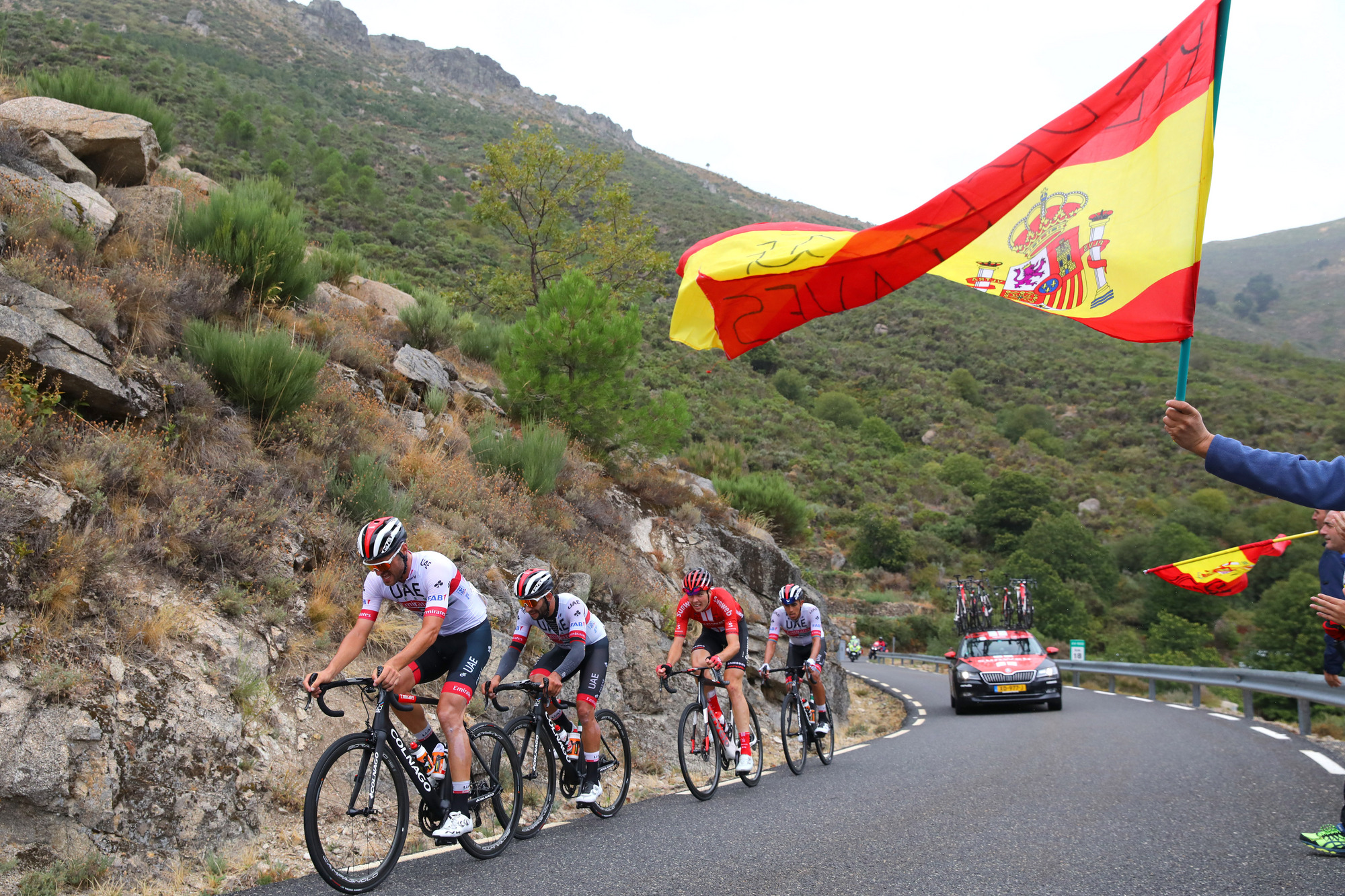The rumours around the Vuelta a España 2023 route ahead of Tuesday's presentation
Angliru, Tourmalet and ultra-tough third week all rumoured

The Vuelta a España 2023 is set to publish its route on Tuesday, with speculation that it will feature an ultra-difficult third week, eight summit finishes and a return to the Angliru, Spain’s single toughest climb.
The last of the Grand Tours to publish its route each year, the outline of the 2023 Vuelta will finally be unveiled on Tuesday evening in a special presentation inside Barcelona’s Palau de la Musica.
With such a lengthy build-up, there has been ample time for rumours to gather about an ascent of the Tourmalet, multiple stages in the Picos de Europa in northern Spain and a final showdown in the sierras of Guadarrama an hour's drive northwest of Madrid.
But the only definitive stages, for now, are a team time trial kicking off the race in Barcelona on Saturday August 26th; a stage ending with a short, punchy uphill finish in the Montjuic Park in the Catalan capital the following day; and stage 3 taking the race into Andorra for a first brief incursion into the mountains on the first Monday. It also seems certain that the 2023 Vuelta is set to finish in Madrid, on Sunday September 17th.
Having briefly visited Andorra, the first leg of the Vuelta will see the race then loop back south towards the less challenging climbs of the region of Valencia. Although technically not a summit finish, stage 8 over the steep, narrow ‘wall of Cati’ in the province of Alicante and the short breakneck descent that follows to the line will likely be one of the main challenges of the first week.
However, rumours that the race will tackle the Miserat, an exceptionally hard and unprecedented summit finish in the same area are yet to be confirmed, with other sources claiming that instead of the Miserat, there may be a much easier stage on Sunday in Murcia to round off the first week.
The second week is all but certain to open with a medium-length individual time trial in Valladolid in northern Spain before heading east. Three summit finishes are expected, the first on stage 12 to Laguna Negra, a climb often used to decide the Vuelta a Burgos. A second in France on one of cycling’s best-known monster ascents, the Tourmalet has already been widely published, but much less is known about the third mountain stage, except that it will end, in all probability, at the ski station of Belagua.
Get The Leadout Newsletter
The latest race content, interviews, features, reviews and expert buying guides, direct to your inbox!
Hard though it is to imagine, all of these climbing challenges could be overshadowed by the scale of what the Vuelta peloton may face in the third week of 2023.
In a far harder finale than in 2022, the Vuelta is expected to return to an unspecified but difficult summit finish in Asturias, and then follow that up immediately with an ascent of the dreaded Angliru in the Picos de Europa. Last visited during the Vuelta of 2020, and often the decisive climb of the entire race, the Angliru was one of the few points in the 2020 edition where eventual winner Primoz Roglic (Jumbo-Visma) came close to cracking.
As if that was not enough for the peloton to handle, the Vuelta is then expected to pivot back towards Madrid for a stage through the sierras of Guadarrama, similar in format to the last day of the 2022 race.
Notable absences from the route are likely to be any stages in Spain’s largest province, Andalucia, in the south or in the westerly region of Extremadura, both of which featured heavily in the 2022 edition. Another region frequently visited by the Vuelta is Galicia, which hosted much of the last week of the race, but is also expected to be completely missing for a second straight year.
On the other hand and for the second year running, the 2023 Vuelta looks set to have some hefty transfers. Nothing is likely to be quite as challenging as the last day’s drive in the 2023 Giro d'Italia from Trieste to Rome. But one long haul across half of Spain at the end of the first week looks likely, and another back down towards the capital on the second last day. By late on Tuesday evening, in any case, what lies in store for the riders and race followers of the Vuelta a España will finally have become much clearer.
Alasdair Fotheringham has been reporting on cycling since 1991. He has covered every Tour de France since 1992 bar one, as well as numerous other bike races of all shapes and sizes, ranging from the Olympic Games in 2008 to the now sadly defunct Subida a Urkiola hill climb in Spain. As well as working for Cyclingnews, he has also written for The Independent, The Guardian, ProCycling, The Express and Reuters.
